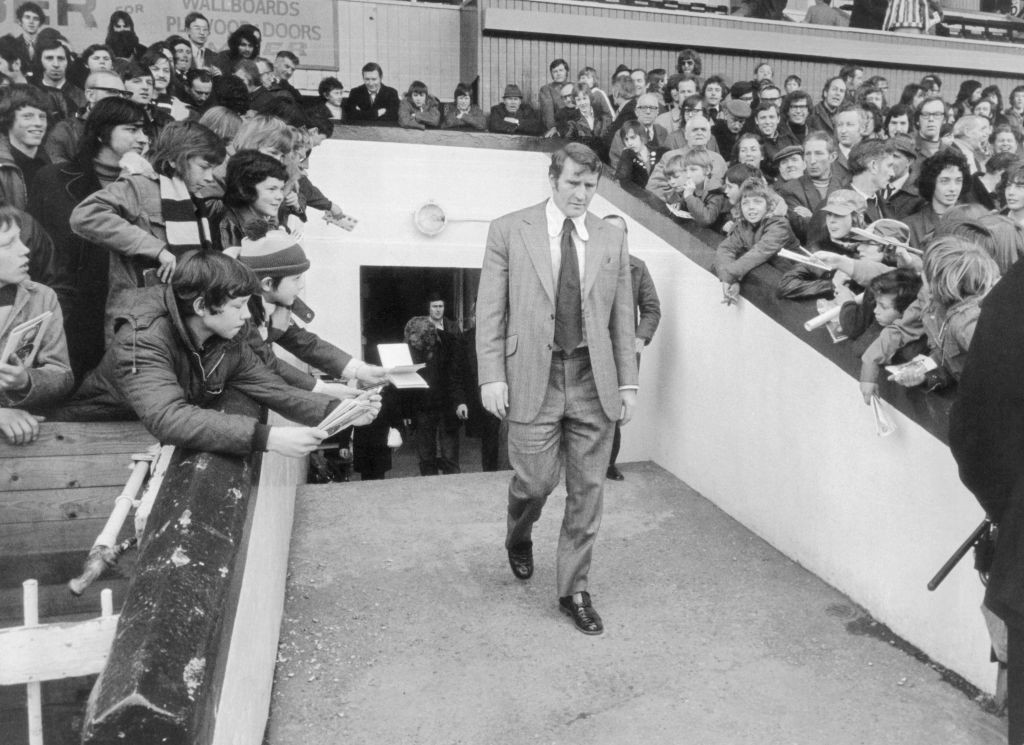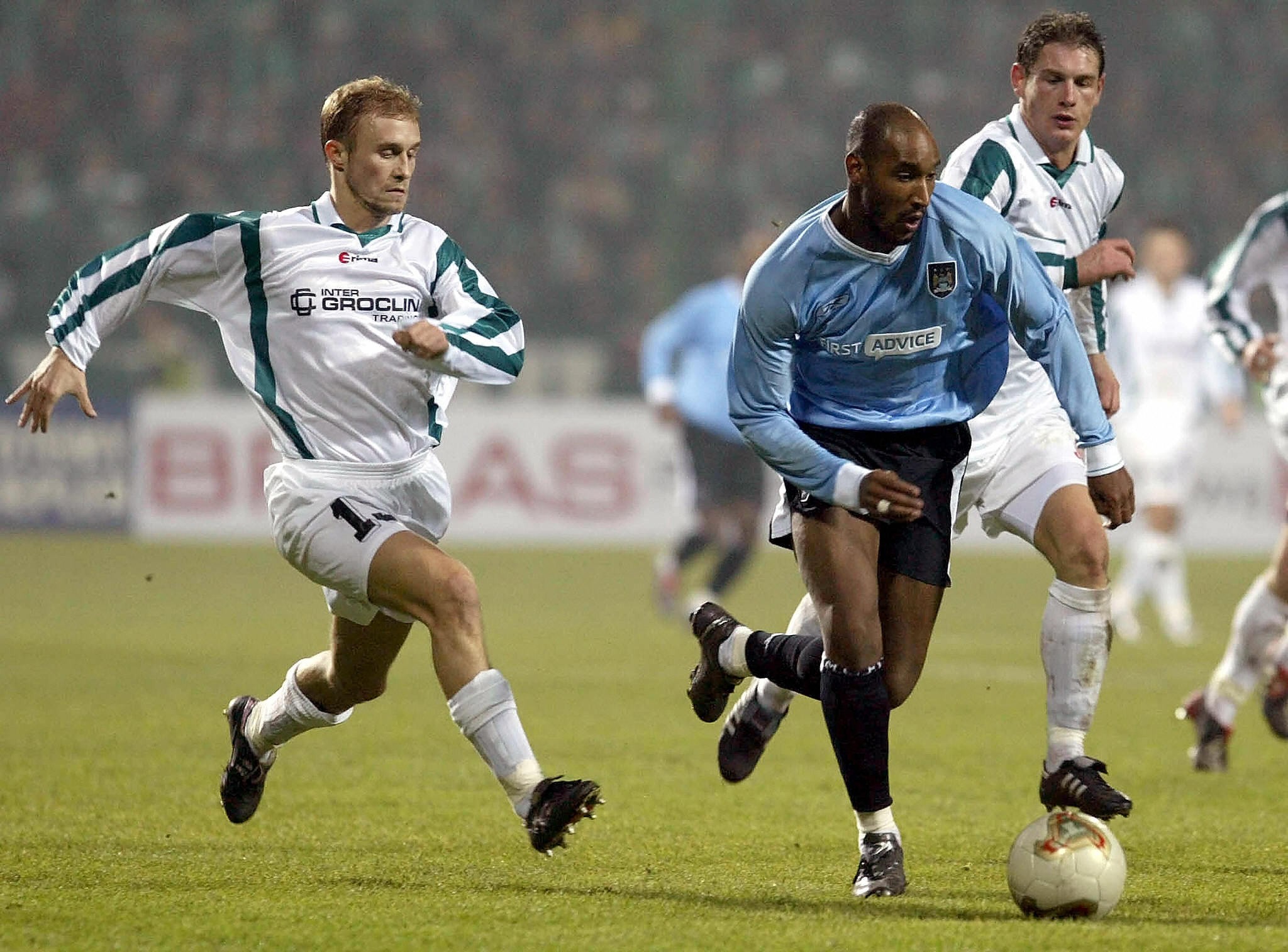Behind The Curtain: Manchester City & Eastern Europe
By Simon Curtis | 16 September 2019Simon takes a look at Manchester City’s long history with Eastern Europe.
(Photo from Getty Images archive)
Just 347 kilometres separate Budapest from Zagreb, but in Manchester City terms, the two cities are also split by a more sizeable gap of 50 years. This is a story of Eastern European symmetry, City-style.
In 1970, City’s fledgling European efforts were beginning to take shape. On 4th November Honved, the army side from Budapest, arrived in Manchester for a second leg tie in the 2nd round of the much maligned Cup Winners’ Cup. Much maligned it may have been, but the Cup Winners Cup was a tournament that had already featured many British successes, with West Ham, Spurs and Chelsea finding prestige and glamour inside UEFA’s so-called “third tournament”. It also became a tournament renowned for bringing to us what Shoot magazine always termed “crack” Eastern European sides, with such luminaries as Magdeburg, Slovan Bratislava, Dynamo Tbilisi, Dynamo Kiev and Karl Zeiss Jena making their mark in the tournament’s early years. Why they were always “crack” and not “mysterious” or “unpronouncable”, I don’t know, but in those days there was no Twitter to pour ridicule on the inventor of the description, so you just went with it.
On this occasion, Honved were to fall to a smooth, slick City side marshalled by the energetic midfield prompting of Colin Bell and Alan Oakes and given thrust by the persistent forward charging of Mike Summerbee and Francis Lee. In the following round City would face Gornik Zabrze of Poland, taking three games – including an extra play off in Copenhagen – to shake off the well-drilled Silesian team. It was not the first time City had played Gornik, of course, the talented Poles having been stubborn opponents in City’s final win the previous season, 1969-70. A deluge in the Prater Stadium, Vienna, on that illustrious occasion may have soaked the hardy band of City supporters that had made the intrepid journey across Europe, but the triumph put City ahead of the likes of future big guns Liverpool in European pedigree. What was to come for the Merseysiders in the 70s and 80s would put all British clubs in the shade, but at the time of City’s triumph, Liverpool were yet to taste continental success, with only a final defeat to Borussia Dortmund in 1966 to show for their efforts, a run incidentally that also saw them defeat Honved in an early round.
For City the Honved game had served to bring another link between them and Eastern European football to light. Extravagant coach Malcolm Allison had been infatuated with the Hungarian football philosophies of the 50s during his playing days at West Ham and had brought many of the elements he had seen in their training routines, match preparation and in-game tactics to Moss Side. Even before that he had become a pseudo coach at the Boleyn Ground: although still nominally a member of the playing staff, Allison would take manager Ted Fenton’s team sheets down when they were posted every Friday after training and return after a brief tête-à-tête with Fenton to post “new” tweaked line-ups and formations. The players were left in no doubt who was taking the big decisions, a feature of Allison’s presence that would follow him from Plymouth to Middlesbrough and Lisbon to Kuwait as a most charismatic manager. His group of conspiratorial worshippers amongst the Upton park playing staff included future managers Noel Cantwell, John Cartwright, Dave Sexton, John Bond, Ken Brown, Andy Nelson and Jimmy Andrews. His influence, and that of the Hungarians, would be spread far and wide through the English football league and beyond.
(As a player in 1953 Allison, with future Norwich manager Ken Brown alongside him at the back, had been in the West Ham side thrashed 6-0 at home by a startling AC Milan side led by Gunnar Nordahl and Alberto Schiaffino. This experience too had shaped Allison’s thinking)
Allison had been at the Prater long before that rain-soaked Cup Winners Cup final of 1970, when he finally got the chance to show the world what he had learned, training there in his army conscription days as an 18 year-old and bunking off to watch the Austrians train. “Demob date couldn’t come quickly enough,” Allison mused. “I was deeply impressed with the way the Austrians enslaved the ball. They made it do all the work. They were neat and controlled. There was nothing crude or haphazard about their work. I thought to myself, this is what we have to do in England. I was going to try to adapt some of the ideas I had picked up from watching the Austrians.”
The Honved games in 1970 had seen City playing some of their best, most artfully fluent football of an era heavily decorated with their flamboyant winning style. At the end of the tie, a Honved official approached Allison and told him “that was the best football we have ever seen from an English team in our country. You showed skill, strength and aggression.” For Allison these accolades represented a kind of climactic fulfilment of years of tinkering, adapting what he had seen from the Austrians and the Hungarians and the great Milan side of the 50’s and generally addressing the infinite minutiae of coaching. Allison was a deep thinker and maintained a weather-eye on every tiny segment of his players’ professional lives, much like, it must be said, the delicious pedantry of the present well-dressed incumbent at the Etihad.
Inspiration From Puskas & Others
In his revealing 1975 memoir “Colours of my Life”, Allison remarked, ‘I had been introduced to the mystique and the background of that extraordinary Hungarian side that burst across the continent in the 1950s’. After the first leg against Honved in the dusty Budapest suburb of Kispest, Allison was further indulged, escorted by home team officials to the restaurant where Puskas was said to have made a start on building the solid paunch that tricked so many into thinking he was fat and slow and the nearby house with the red chimney, where he had lived before defecting. “They told me how Puskas made that left foot such a deadly weapon, something so easy and natural that he could control a football as another man holds a fountain pen…”. Echoing Guardiola’s never-leave-anything-to-doubt mantra, Allison contended, “In England we are too sloppy. We do things out of habit and without properly enquiring about their value. We lack the deep conditioning, which is inbuilt on the continent and in South America…”
Honved (national champions in 1950, 1952, 1954 and 1955) had delivered the likes of Puskas, Bozsik, Czibor, Kocsis, Grosics, Budai and Lorant to a Hungarian national side, which came to Wembley and startled England out of their self-important slumber. Allison was entranced. Puskas, seen as overweight and immobile, performed a 90-minute masterclass in energy conservation while making England’s midfield look like a group of hastily arranged battery chickens. It was the home nations first ever defeat on home soil by a team from outside the British Isles and it certainly coloured Allison’s life. He would copy the Hungarian’s lightweight boots and shorts cut to the thigh, fascinated by the little bits and pieces that had gone into their match planning.
Easy passing and finding space for others were his meat and drink. The wake-up call was shrill and painful: an unprecedented 6-3 defeat on our own hallowed turf for what the FA and many supporters still considered the untouchable masters of the game. After being mauled and summarily undressed by the strolling Magyars, things would begin to change and Allison was at the front of the queue to enact the transformation needed. In his role as a television pundit, the City coach continued to be vociferous in his criticism of the English game and the dusty old men who ran it. Putting his thoughts into practice at Maine Road, he and Joe Mercer developed a side honed on proper fitness training, good diet and rigorous planning and practice. The results were quick to materialise, with City entering their best-ever phase of trophy-winning, a golden period only surpassed by recent events. Nothing lasts forever, though, and with Allison gone, the cold Siberian winds of stagnation and failure started to blow through the club.

(Photo by Evening Standard Hulton Archive)
Typical City
Despite City’s star waning in the 70’s, the link to Eastern Europe remained strong, if a little more embarrassing. A workmanlike Widzew Lodz side came to Moss Side in 1977 and introduced the watching Kippax to the nascent skills of a certain Zbigniew Boniek. The future team mate of Michel Platini, the pair forming the fulcrum in a mouth-watering Juventus midfield of the early 80’s, provided a masterclass in a 1st round UEFA Cup match. City had been two-up with only 18 minutes remaining when Boniek turned on the skills and scored twice in five minutes to level the scores. The City faithful were witnessing the first flashes of evidence that here was a great to be.
Boniek knew it too. Obviously pleased with his dramatic intervention, he had run to the crowd in celebration after his second goal had tied things on the night, unaware of what kind of creeping danger lurked in the dark bowels of the Kippax. Immediately confronted by an over-enthusiastic City fan wishing to share some tips with him, Boniek was ushered away from the touchline, only to be confronted by the handily placed Willie Donachie. The left back, in a much better position to vent his frustration than the poor fellow being frogmarched out of the ground by the local plod, took his opportunity as only a son of the Gorbals can and was immediately sent off by the unimpressed Irish referee, Mr Ryan.
With this moment of high-powered recklessness, Donachie also rendered himself unavailable for the second leg, which City duly drew 0-0 in front of a baying 40,000 crowd in Lodz to bow out of the tournament. Later on, after the lengthy famine of the 80s and 90s, when football success of any form deserted the club, City’s great European nights were resurrected in the slightly obscure form of a tie with another Polish footballing aristocrat, the mighty Groclin Dyskobolia.
Yes, Groclin Dyskobolia.
The year 2003. A period of heady (or headless) over-stretching under the arch-fantasist Kevin Keegan. It was around the time Keegan had thrown a dicky fit in David Bernstein’s office because the chairman had pulled the plug on a way-too-expensive deal for a roly-poly Robbie Fowler, who had suddenly become available in Leeds United’s closing down sale. By the time Groclin arrived with their dysko bollias, Fowler was on board despite everything. Keegan, full of smiles and japes, had got his way – as he often did – and paired him on this grand occasion with Nicolas Anelka in an expensive front two with the mouth-watering talent of Jon Macken waiting in the wings, if anything went awry. An ideal banana skin proved too much for City to resist, scoring early in the home leg through the Rolls Royce Anelka, before falling fully asleep to allow a second half comeback from the Dyskobolia Ladas. Another compelling tragi-farce was waiting for City in the second leg in Grodzisk Wielkopolski (no, you look it up), where they arrived to find Groclin’s home ground resembled a public park in a blizzard and duly dropped out after a goalless mess of a second leg, Sun Jihai and Richard Dunne looking like two of the sugar plum fairies as they skated about haphazardly on the frozen surface of a duck pond.
Modern Times
If City’s re-entry into European combat had been to a backdrop of belly laughs, the tittering would only die down slowly under the triumvirate of new era managers Roberto Mancini, Manuel Pellegrini and Guardiola. In 2010-11, City’s Europa League campaign (the club’s efforts in continental competition were lasting just long enough to be called this by now) duly featured another three trips beyond the old Iron Curtain, to play Politehnica Timisoara, Lech Poznan and Dynamo Kiev, games mainly remembered respectively for Mario Balotelli’s debut goal, the mass backs-to-the-action jumping Polish support from whom City fans briefly adopted the Poznan and a strange tale of Ultimate Balotelli.
The Kiev matches were the last for City that season, eliminated 2-1 on aggregate. The 2-0 loss in freezing conditions in the away leg had set the seal on things, with a bizarre delay to the second half while a search party was dispatched to locate the wayward Italian. With his countryman Mancini going berserk on the touchlines, a visibly distressed Balotelli finally showed up, eyes streaming, head bowed, looking like a small boy who had been told off for eating too much of nona’s Crostata di Fichi. As Mancini’s arms flailed and Balotelli’s eyes leaked, it became (kind of) clear that the striker had picked up some sort of allergy to the pitch, a first even for him, surely a first for the watching Ukrainians and a first for the rest of us. Understandably distracted, David Silva missed City’s best chance on the night and the dye was cast.
Recent seasons have brought the Czechs from Plzen, CSKA Moscow, twice (one of which behind closed doors that suddenly swayed open to let in some of the more staunch home supporters), and a ragged bunch purporting to represent ex-European Cup winners Steaua Bucharest. As well as this, a second outing against Dynamo Kiev was coped with more successfully in Pellegrini’s swansong run to the semi finals in 2015-16 and a growing attraction to Shakhtar Donetsk materialised in the form of two consecutive seasons sharing the group phase with the talented Ukrainians. City begin their 2019-20 Champions League campaign with yet another visit from Shakhtar, making it three seasons on the trot we have to check carefully where to put the ”h”, plus a first-ever trip east to Croatia to meet the perky Dynamo Zagreb. And so what at first glance may look like slightly tedious fixtures against relatively low profile sides from the far flung corners of our continent actually represent a neat return to where it all started for Manchester City all those European years ago.

(Photo by JANEK-SKARZYNSKI/AFP)
